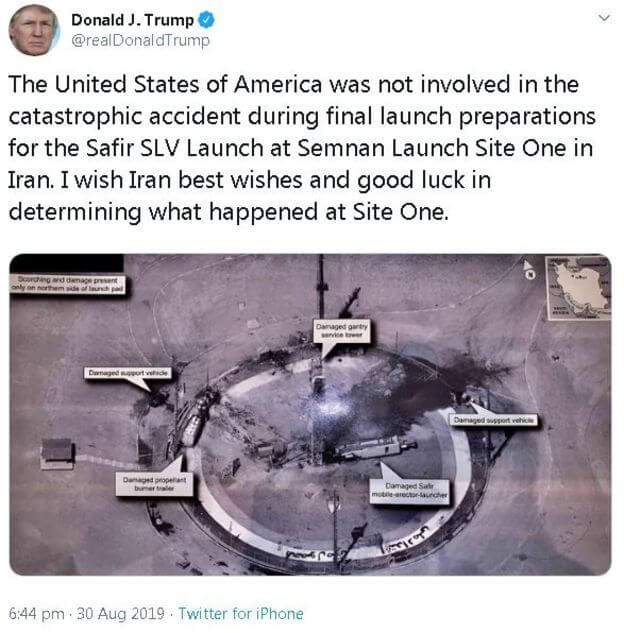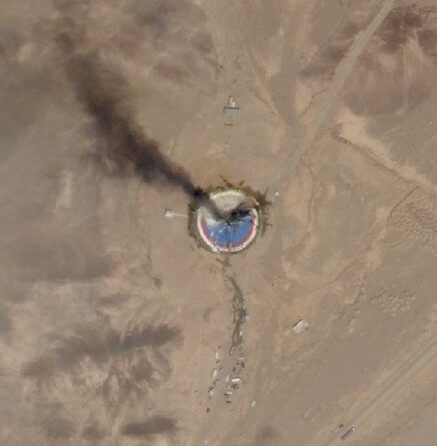In a Rose Garden speech outside of the White House, US President Donald Trump, has formally reinaugurated the US Space Command. This is, in effect, a release of US Space Command from the command structure of the US Strategic Command into which it was subsumed some years ago. Nevertheless, this move is viewed as more than just a resurrection, as it is actually a step towards the much more significant formation of a new armed force – the US Space Force (USSF). Soon after this announcement, and to the chagrin of it and other US intelligence agencies, in his Twitter column President Trump published a secret satellite photograph of the devastation caused by a suspected Safir rocket, pre-launch explosion which took place on 29 August. The explosive failure is believed to have occurred during fuelling operations at the pad at the Khomeini Space Centre in the Semnan province of Iran. No details of casualties have been released. The rocket launch was apparently to have carried the 55 kg, Nahid -1 experimental communications satellite.
The message on Twitter which accompanied the allegedly classified image was ostensibly a denial that USA had anything to do with the failure, along with a message of good wishes. Nevertheless, some believed that it had more than a hint of gloating about it. The published photograph appears to have a resolution of 10 cm (0.1 m) and this has led to the conclusion a KH-11 Advanced Crystal imaging/reconnaissance satellite was used to take the image of the launch pad. Amateur analysis of the slant angle has led to the conclusion that the NRO L-49 (USA 244) spacecraft took the photograph.

Donald Trump’s twitter tweet and image of the devastated Semnan launch pad in Iran. Courtesy: Twitter/Donald Trump
Later commercial satellite imagery became available to verify the claims, including the one below which clearly shows the debris from the rocket at the bottom of the image.







